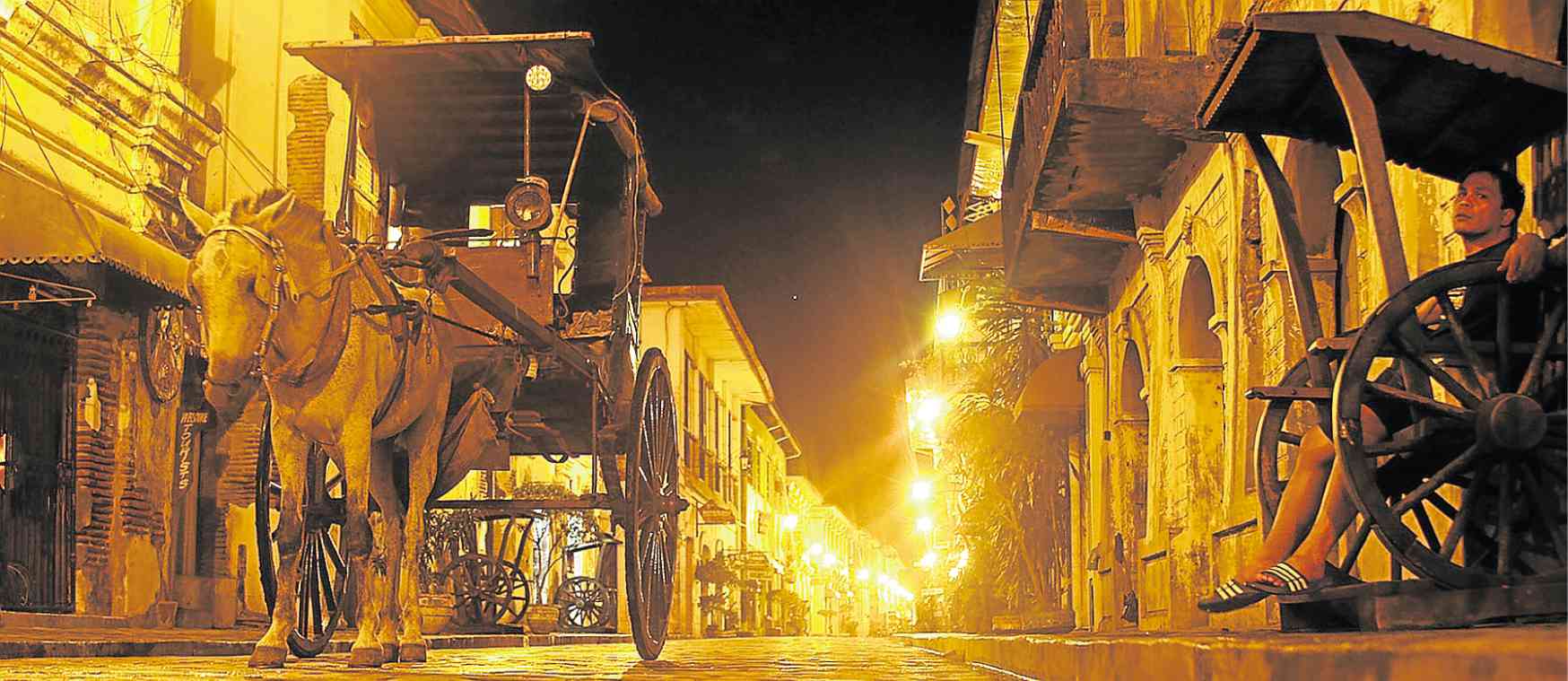
BREAK TIME A calesa (horse-drawn carriage) driver rests as he waits for tourists on Calle Crisologo in Vigan City. —LEONCIO BALBIN JR.
MANILA, Philippines — Vigan City was hailed as one of the most picture-perfect tourist destinations in Asia—and the only one in the Philippines—by international television network CNN.
The capital of Ilocos Sur province was described by CNN Travel as “one of the best places to experience Spanish colonial-era architecture in Asia,” in its recent “13 of Asia’s most picturesque towns.”
Other localities cited by the CNN are Hoi An (Vietnam), Yufuin (Japan), George Town (Malaysia), Luang Parabang (Laos), Kampot (Cambodia), Kota Gede (Indonesia), Galle (Sri Lanka), Zhouzhuang (China), Mawlynnong (India), Ghandruk (Nepal), Sai Kung (Hong Kong) and Phuket (Thailand).
Must-see landmarks
Travel and food journalist Kate Springer noted a number of must-see Instagrammable landmarks in Vigan, including Plaza Salcedo, named after the Spanish conqueror, Juan de Salcedo, who subdued the early native settlement in Vigan, and the Baroque-style St. Paul’s Cathedral, which was built in the early 17th century and had been restored multiple times after surviving earthquakes and fires.
She also noted the cobblestone Calle Crisologo which “features well-preserved heritage houses, al fresco bars and ‘kalesa’ (horse-drawn carriages) that transport you back in time.”
Tourists may also get their photos taken while handcrafting a traditional earthen jar at RG Jar Factory, or while eating “fresh and flaky” empanada (turnover with egg, native sausage and vegetable filling) in food stalls at the public market or plaza.
History, culture
In a statement on Wednesday, Tourism Secretary Bernadette Romulo-Puyat said the citation “means that sustainable tourism is not just about environmental protection but also the preservation of the country’s history and culture.”
Vigan, she said, showcases the local government’s efforts in preservation of its ancestral houses by mandating thorough research and documentation of the building’s original design before permitting any restoration work.
Ancestral houses are transformed into museums, souvenir and antique shops, and restaurants while maintaining the original Spanish style influence.
Established in 1572, Vigan was declared by the United Nations Educational, Scientific and Cultural Organization a World Heritage Site in 1999 for being the “best-preserved model of a Spanish colonial town in all of Asia.” In May 2015, Vigan was officially recognized as one of the New7Wonders Cities in the world. —Dexter Cabalza

